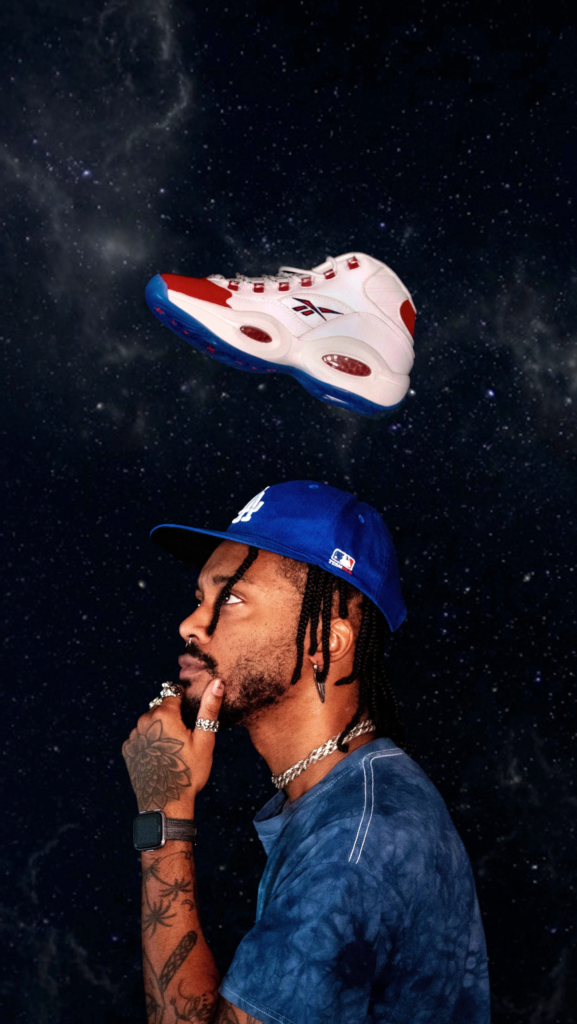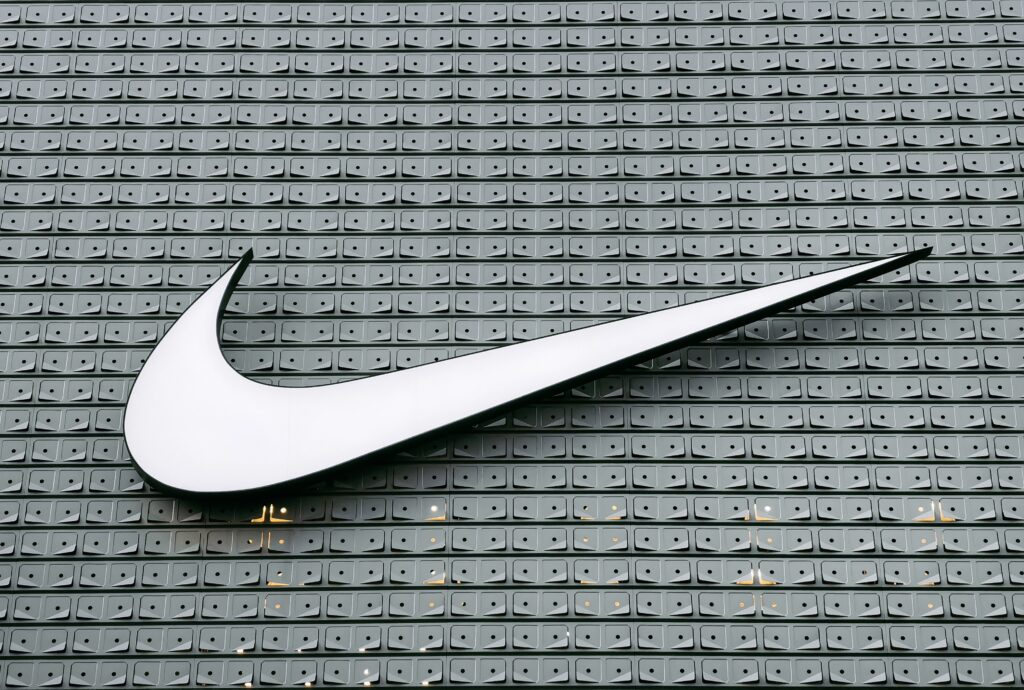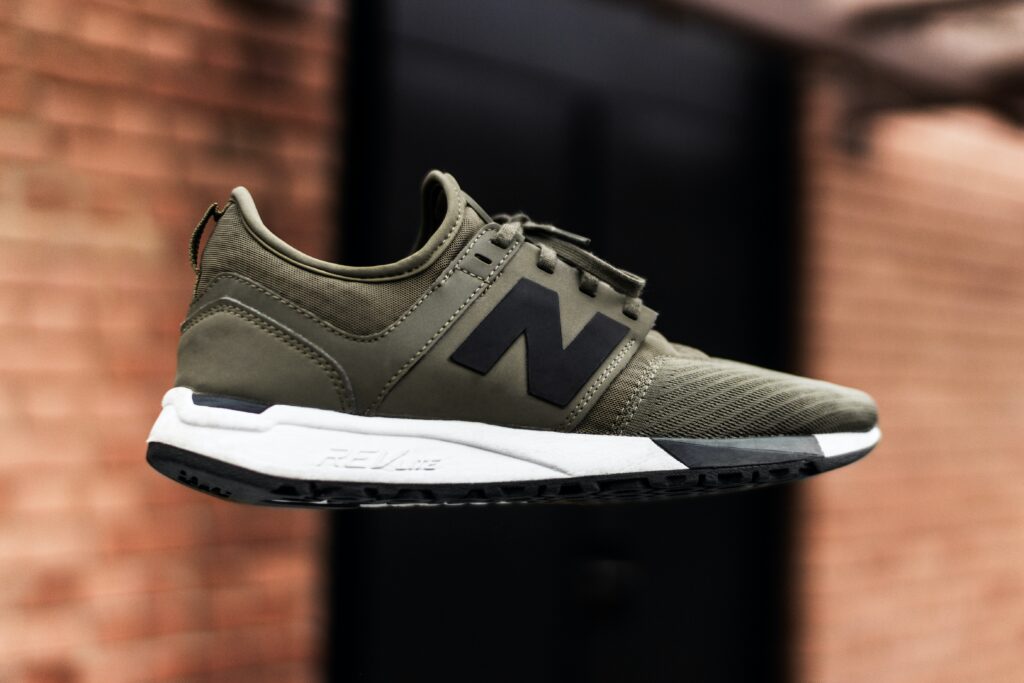From the moment we lay our eyes on our favorite brands, we often recognise them by their logos. It’s no secret that these logos hold significance and help brands stand out in a crowded market.
One such iconic symbol that has made its mark in the fashion and fitness industry is Reebok’s logo. Since its inception in 1958, the Reebok logo has undergone a significant transformation. Let’s take a trip down memory lane and dive into the history and evolution of the Reebok logo.
History Of Reebok Logo

Reebok was founded in 1958 by two brothers, Joe and Jeff Foster, in Bolton, England. The original logo featured a Union Jack flag and the company name in block letters. In 1986, the brand embarked on a new marketing campaign and introduced the “Vector” logo.
This design, which symbolizes a delta formation in aerodynamics, was inspired by the brand’s tagline at the time, “The Best on Earth.” The Vector design was a major success and became an instant hit.
However, in 1992, Reebok introduced a new design that would change the brand’s history. The “Delta” logo was unveiled to the public with the launch of their “Dan and Dave” campaign, which featured two Olympic decathlon athletes.
The Delta symbolizes the triad of physical, mental, and social change. The logo was in the form of a triangle shape with a sharp tip and curved sides, giving it a modern and sleek appearance. This design was a significant shift in the brand’s identity, departing from the Vector design that was favored by many enthusiasts.
The Delta logo remained as the Reebok logo for nearly 24 years, with slight modifications through the years. In 2014, Reebok launched a new campaign, “Be More Human,” which sought to encourage individuals to live a life of fitness and health.
The new logo was designed to represent the movement of the human body, with organic curves and a hand-drawn appearance. The new logo was considered a return to the brand’s roots, which emphasized the human spirit and the importance of individual fitness.
In 2019, Reebok decided to return to its classic roots and refresh its previously acclaimed Vector logo. The updated Vector logo features the same delta formation as the previous design, but with a brighter accent color, and a more modern presentation suited for today’s market. The Vector reboot symbolizes a new era with a nod to the company’s rich heritage.
Design Elements that Define the Reebok Logo

The Reebok logo is an instantly recognisable symbol that encapsulates the brand’s ethos and visual identity. Through its evolution from the Vector to the Delta, the emblem has retained vital design elements that connect Reebok to its heritage while keeping the brand relevant.
The Vector logo introduced in the 1980s established the foundations of Reebok’s distinctive visual style. The iconic intersecting lines form an upward arrow, representing forward momentum and progress. This symbolizes Reebok’s commitment to pushing boundaries and enabling athletes to reach their full potential. The sharp, geometric shapes create a bold, impactful logo that demands attention.
When Reebok unveiled the Delta logo in 2006, it embraced minimalism while retaining its core values. The triangular shape represents balance, simplicity and change – critical to Reebok’s brand philosophy principles. It also symbolizes sports arenas and fields, and the upward motion indicates a sense of energy and aspiration.
Typography is an often overlooked but crucially important design element in any logo. Reebok’s bold, all-caps typography introduces the brand name with confidence and strength. The sharp angles of the lettering complement the geometric triangle, bringing visual harmony. This typography, combined with the iconography, makes Reebok’s mark highly distinctive.
Analyzing the Vector and Delta logos shows how Reebok has maintained design continuity over decades. The balance of minimalism, symbolic association, typography and color combine to create a versatile logo rooted in the brand’s identity. Reebok’s logo has evolved aesthetically while retaining its core visual language.
Additionally, Reebok has expanded its reach globally, becoming a leading sportswear brand appreciated by athletes and enthusiasts worldwide. The logo’s recognition has grown alongside Reebok’s commitment to innovation, quality, and performance. The emblem has come to represent not only a successful brand but also a symbol of athletes striving for greatness.
Furthermore, Reebok’s logo serves as an inspiration for other brands seeking to establish a strong visual identity. Its ability to evoke emotions and convey the brand’s values has made it an iconic symbol recognised in various sports, from running and fitness to basketball and soccer. The logo’s versatility and adaptability to different mediums and platforms have solidified its position as a timeless piece of design.
Overall, Reebok’s logo stands as a testament to the importance of consistent branding and design integrity. It continues to resonate with audiences, capturing the essence of the brand and its dedication to excellence.
What Does Reebok Logo Mean?

The Reebok logo was designed in 1986 and represented the company’s transition from an athletic footwear brand to a fitness and lifestyle brand. The logo was created by Todd Snyder, who was inspired by the African Gazelle, known for its speed, grace, and agility. The Gazelle symbolizes the brand’s commitment to excellence in sports and fitness. The angled shape represents forward momentum, progression, and strength. The three-sided shape of the delta symbolizes the physical, mental, and social change that comes with living an active lifestyle.
The Reebok logo was updated in 2019, and the new logo carries the same theme of progress and growth, but the shape is more streamlined and polished. The new logo has three horizontal lines that represent progress, giving the brand a more modern and dynamic look. The new look is supposed to signify Reebok’s commitment to embracing change, discovering new ways to enhance overall fitness and wellbeing.
The Reebok logo went through many evolutions before the current design. Initially, the brand relied on text as its logo and included the British flag as a way to signify its British heritage. The brand then changed the logo to include an abstract symbol that looked like a red-tailed panther in the ’60s, before returning to text-centered logotypes in the ’80s.
In the 1990s, Reebok simplified its logo by removing the British flag and slogan and switched to a straightforward and bold lettering design. The word ‘Reebok’ was rendered in italicized letters and had a red, white, and blue color scheme to symbolize its British heritage and American Identity. The iconic Reebok Vector logo emerged in the ’90s, which incorporated a vector-type design to represent the brand’s speed, power, and motion.
Why Are There 2 Reebok Logos?

The history of Reebok dates back to the 1890s when it started as a small family business in England. Initially, the brand was creating spiked shoes for track and field athletes. The company then steadily grew, and eventually, in 1958, it was officially named “Reebok,” which is a type of African gazelle. However, it wasn’t until the 1980s that Reebok exploded in popularity. The hype began with the release of their Freestyle shoes that were designed for aerobic exercise.
In the 1980s, Reebok’s main logo featured the brand name in a unique font called Union Jack. This symbolized the brand’s British heritage and became instantly recognizable. As the brand continued to evolve and expand its product offerings, it recognized a need for a more universal logo. In 1992, the iconic Vector logo was introduced.
The Vector was derived from Reebok’s original Union Jack logo but was designed to have a more global appeal. This new logo indicated the brand’s international ambitions, reflecting Reebok’s vision to be a global fitness empire.
So why did Reebok decide to keep both logos? First, the Vector symbol became just as recognizable as the Reebok name. Secondly, having two logos allowed the brand to appeal to different markets while also offering a degree of versatility. The Vector logo could be used in a more sports-centric context, while the Reebok name could be used more broadly in lifestyle applications.
Another reason the brand decided to keep both logos is that they have different connotations for different people. The Reebok name is more established and well known, while the Vector symbol indicates more of a high-performance focus. By keeping both logos, Reebok can easily differentiate between the two aspects of their brand, promoting them appropriately and avoiding any confusion or misunderstandings with their customers.
What Is The Tagline Of Reebok?
Reebok’s journey started in England in 1895, when Joseph William Foster introduced a range of running shoes. The brand’s first significant achievement was in 1982 when they introduced the Reebok Freestyle, the first athletic shoe designed specifically for women. It did not take long for Reebok to expand globally and become a popular brand on the international stage.
The Reebok tagline is “Be More Human.” This tagline sums up Reebok’s philosophy, which is not just about fitness but also about the human spirit. The company believes that fitness is not just about being physically active but about bettering our mental health, inner strength, and well-being.
Reebok believes that physical activity makes us more human, and the pursuit of fitness is an essential aspect of life. This tagline has been a part of Reebok’s brand identity since 2015 and has helped establish their vision.
Reebok’s evolution as a brand has gone through many phases, from being an athletic brand in the 80s and 90s to a streetwear brand in the 2000s. However, in recent years, Reebok has doubled down on its fitness-focus and returned to its roots as an athletic brand.
They have collaborated with numerous fitness influencers, launched innovative campaigns, and brought cutting-edge technology to their shoes’ design. This shift in focus has been well-received among the fitness and athletic community.
The brand’s connection to fitness did not start yesterday, and it’s something the company takes seriously. Reebok organizes CrossFit competitions, sponsors fitness events and works towards making fitness more accessible for everyone. In addition, Reebok has also launched its fitness club, Reebok CrossFit One – a space that promotes fitness and well-being through structured classes and programs.
Where Did The Brand Name Reebok Come From?
While searching for a unique brand name, they encountered the African grey rhebok, a type of antelope found in South Africa, in a dictionary. They were intrigued by the animal’s unique name and its speed and agility, which perfectly aligned with the qualities they wanted their products to be associated with. They decided to use Reebok as their brand name.
Over the years, Reebok has become a household name, with its brand logos and designs continuously evolving to appeal to new generations of customers. In the 1980s and 1990s, Reebok greatly expanded its product line, introducing new sports shoes and apparel. The brand also became known for its collaborations with famous athletes, such as Shaquille O’Neal and Venus Williams.
Today, Reebok is a subsidiary of the German sportswear company Adidas, which acquired it in 2005. The brand continues to innovate its products, focusing on sustainability and environmental responsibility. Reebok’s latest initiative is the launch of a line of plant-based performance shoes that are made from natural materials such as eucalyptus bark, natural rubber, and corn.
How Many Times Did Reebok Revamped Their Logo?

Reebok’s original logo was created in 1895, featuring gray running men and the brand name written in block letters. As time passed, however, the logo underwent a series of changes. In 1958, the logo was updated to feature a Union Jack flag, symbolizing Reebok’s British roots. In 1979, the company decided to revamp the logo again, this time featuring a red, white, and blue abstract vector striping.
In 1986, Reebok went through another logo change, which was to feature the word ‘Reebok’ in italic letters with a vector arrow riding off the letter ‘r.’ The modern-day iteration of the logo has remained with only minor updates since then.
This change was significant because, for the first time, the brand name became the primary focus of the logo, rather than the graphic design. The most recent rebranding took place in 2018, where the logo was simplified even further, fitting more into a flat and streamlined design.
Reebok has always made an effort to keep up with current trends, and their logo revamp is a clear representation of this. The brand has switched its focus from graphic elements to the brand name, highlighting a minimal design that emphasizes the brand’s overall quality and exclusivity.
One of the reasons why Reebok has been successful for so long is that they are always willing to evolve, and this is apparent in the constant changes to their logo and overall brand identity.
What Is The Reebok Triangle Logo?
The Reebok Triangle Logo was designed by the creative team at the brand’s headquarters in Boston, Massachusetts. The logo was first introduced in 1986 alongside the brand’s new tagline: “Reebok. The Fitness Company”. The Triangle logo replaced the previous logo, which was simply the word “Reebok” in bold letters. The new logo was intended to represent the brand’s shift from just being a running shoe company to a fitness-oriented brand that offered workout gear and accessories.
One of the most recognizable features of the Reebok Triangle Logo is the use of two different shades of red. This unique color combination was intended to represent a sense of energy, vibrancy, and passion. The use of red in the logo was also meant to symbolize the physical energy that comes with exercise and fitness.
Another important element of the Reebok Triangle Logo is the three sides of the triangle. According to Reebok, each side of the triangle represents one of the three key elements that make up a well-rounded fitness routine: physical, mental, and social. This concept aligns with Reebok’s brand mission of helping people to “Live with Fire,” which means to live with passion, focus, and a sense of purpose.
Over the years, the Reebok Triangle Logo has gone through a few changes in design, but it has remained a symbol of the brand’s commitment to fitness, performance, and style. Today, the logo can be seen on everything from shoes and apparel to gym equipment and accessories.
What Is The Current Logo Of Reebok?
Today, the Reebok logo features a simple yet powerful design, featuring the word “Reebok” inscribed in lowercase letters with a red-colored delta symbol located above the letter “e.” This delta symbol, composed of three sides, represents Reebok’s brand promise of physical, mental, and social transformation through fitness.
The current logo design’s lettering is simple and straightforward, making it easy to read from any distance. The distinct and eye-catching delta symbol provides a unique touch of modernity and invokes a sense of movement and motion.
This characteristic is especially important to Reebok’s DNA as the brand is focused on producing athletic footwear designed to maximize motion through the use of advanced materials and technologies.
When it comes to color, the current Reebok logo features a combination of black and white for the lettering, while the delta symbol incorporates a red color.
The color black portrays strength, toughness, and timelessness, making it a suitable choice for the lettering. The red color, on the other hand, represents passion, energy, and action- all synonymous with athletics and Reebok’s brand strategy.
Cultural Impact and Brand Recognition
A logo is not just a mere symbol; its significance lies in its impact on culture and its ability to resonate with consumers. The Reebok logo, with its strong presence in the sports and fitness industry, has become a cultural icon that surpasses its original context. This is evident through the brand’s influential partnerships, its influence on fashion trends, and its timeless appeal that draws upon past eras.
- Athlete Partnerships: Reebok’s collaborations with renowned athletes like Shaquille O’Neal, Venus Williams, and Allen Iverson have significantly elevated the logo’s stature. These high-profile partnerships reinforced the brand’s credentials in sports and fitness, associating the Reebok logo with athletic prowess, performance, and success. Having the swoosh logo worn and endorsed by the world’s top sports stars amplified its exposure and cemented its status as an iconic symbol of athletic achievement. Furthermore, these partnerships not only expanded Reebok’s market reach but also fostered a sense of connection and aspiration among sports enthusiasts worldwide. Their involvement in major sporting events and philanthropic initiatives further solidified Reebok’s status as a socially responsible and influential brand.
- Streetwear and Fashion: Beyond its impact in sports, the Reebok logo has left its mark in streetwear and high fashion. The brand’s iconic silhouettes and logo designs seamlessly combine athleticism with style, making it highly appealing to the fashion world. Notably, collaborations with renowned designers such as Victoria Beckham and popular streetwear labels like BAPE have further expanded the logo’s influence into new realms. This distinctive fusion of performance and aesthetics has effectively redefined the boundaries of sportswear.
- Nostalgia and Retro Appeal: Nostalgia is a powerful force in branding, as it evokes a sentimental connection with the past. The evolution of the Reebok logo over the decades has successfully generated a sense of nostalgia among consumers. By featuring vintage designs and throwback collections that showcase earlier logo iterations, Reebok taps into the sentimental value associated with its brand. For instance, the brand’s Aztrek and Classic Leather shoes not only drive feelings of nostalgia but also establish a link between Reebok’s rich heritage and contemporary tastes. This successful consistency and adaptation of the logo over time further enhance its retro appeal, ultimately creating a timeless quality that resonates with consumers.
Final Words
Over the years, Reebok’s logo has been revamped five times, and the evolution has been remarkable to see. From a simple black and white logo to a 3D vector logo, Reebok has kept up with the times while still staying true to its roots.
The current Delta logo represents Reebok’s commitment to empowering individuals to grow in all aspects of life. Reebok’s logos have always been symbols of strength and determination, and with the Delta logo, this only seems to escalate. We cannot wait to see what Reebok has in store for us next!



